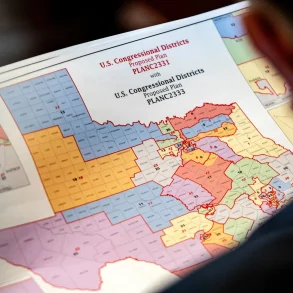The ongoing U.S. government shutdown, now the longest in history at 36 days, is pushing the nation’s air travel system to its limits. Transportation Secretary Sean Duffy announced on Wednesday that the Federal Aviation Administration (FAA) will reduce flight capacity by up to 10% at 40 high-traffic airports if Congress fails to end the impasse. The cuts, aimed at preventing safety risks from overworked air traffic controllers, could cancel 3,500 to 4,000 domestic flights daily and disrupt millions of passengers.
Roots of the Crisis
The shutdown began on October 1 when federal funding expired without a new budget agreement between Republicans and Democrats. Approximately 1.4 million federal workers are affected: most are furloughed without pay, while “essential” employees—like 13,000 air traffic controllers and 50,000 Transportation Security Administration (TSA) agents—must continue working unpaid. Unions report rising stress-related illnesses and workers taking second jobs to cover bills, leading to fatigue and absenteeism.
FAA Administrator Bryan Bedford described the situation as “unusual,” noting that controllers have gone a month without paychecks. “We are seeing pressures build in a way that we don’t feel—if we allow it to go unchecked—will allow us to continue to tell the public that we operate the safest airline system in the world,” Bedford said at a joint briefing with Duffy.
Gradual Rollout of Flight Reductions
The reductions will phase in starting Friday to minimize chaos:
- Friday: 4% cut in domestic flights
- Saturday: 5%
- Sunday: 6%
- Next week: Full 10%
Only domestic flights will be impacted; international routes remain unaffected. The FAA plans to release the list of 40 affected airports—all major hubs—on Thursday. Reports from sources like Reuters and CBS News suggest inclusions such as Hartsfield-Jackson Atlanta International, Dallas/Fort Worth International, Denver International, Chicago O’Hare International, and Los Angeles International.
Duffy emphasized that air travel remains safe for now, but the cuts are a proactive step to preserve efficiency. “We had a gut check of what our job is,” he said. “Our job is to make sure we make the hard decisions to continue to keep the airspace safe.” If the shutdown persists, further restrictions could follow.
Immediate Impacts on Airports and Workers
Even before the announcement, staffing shortages have caused widespread delays. Since October, tens of thousands of flights have been held up, affecting about 3.2 million travelers. Airports have grounded planes for hours when controllers call in sick or borrowed staff from other facilities.
Nick Daniels, president of a union representing over 20,000 aviation workers, highlighted the human toll in a CNN interview: “Air traffic controllers are texting ‘I don’t even have enough money to put gas in my car to come to work.'” He added, “We base what we do day in and day out on predictability. Right now there is no predictability.”
Anonymous controllers shared similar struggles with NPR. One said the situation is nearing a “tipping point,” recalling how frustration peaked during past shutdowns. Another warned that covering for absent colleagues “degrades that margin of safety.” A single father writing for MSNBC described delivering for DoorDash after shifts, sleeping just two hours a night: “Like many families, we didn’t plan for a shutdown. Yet the bills don’t stop.”
Duffy has acknowledged the risks of side jobs but threatened to fire absent controllers. On Sunday, he told ABC: “They have to make a decision: Do I go to work and not get a paycheck and not put food on the table? Or do I drive for Uber or DoorDash or wait tables?”
Airline Responses and Passenger Advice
Major carriers are bracing for disruptions. American Airlines stated it awaits FAA details but expects “the vast majority of our customers’ travel will be unaffected.” Southwest Airlines is evaluating impacts and urged Congress to “immediately resolve its impasse and restore the National Airspace System to its full capacity.” Delta Airlines declined to comment, and other airlines have not yet responded.
Passengers flooded airline hotlines after the briefing. Travelers should check flight statuses frequently and consider flexible plans.
A Call to End the Stalemate
Duffy suggested the cuts could be reversed if Democrats agree to reopen the government, framing it as a safety measure amid political gridlock. The FAA oversees more than 44,000 flights daily, including commercial, cargo, and private aircraft. As the shutdown drags on, experts warn it could worsen delays, economic losses, and safety concerns across the board.
Congress must act swiftly to fund the government and pay its workers. Until then, the skies over America’s busiest airports are set to grow a little emptier—and a lot more unpredictable.








